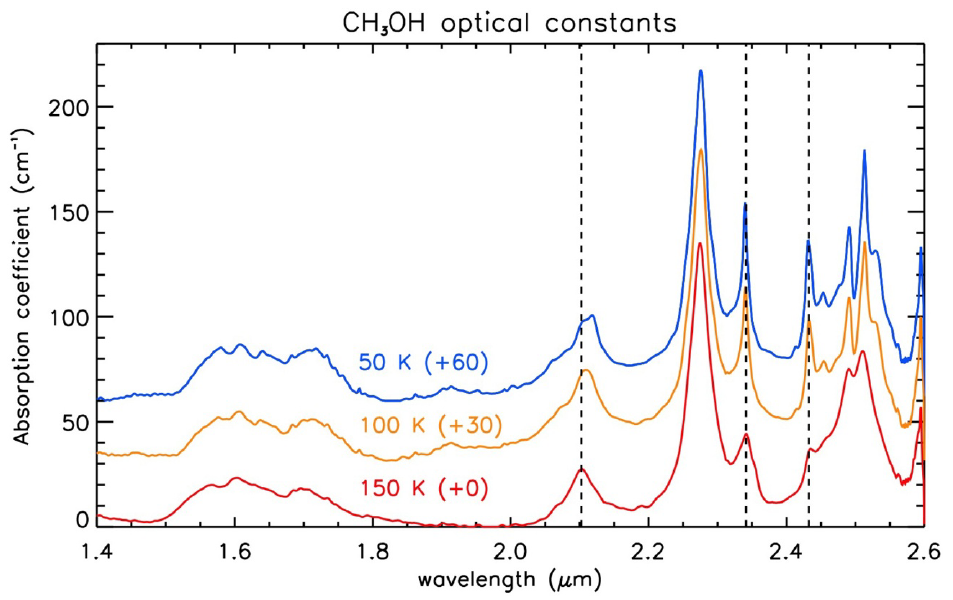
The distribution of H2O, CH3OH, and hydrocarbon-ices on Pluto: Analysis of New Horizons spectral images
Published in 2019 in Icarus 331, 148-169.
J.C Cook, C.M. Dalle Ore, S. Protopapa, R.P. Binzel, D.P. Cruikshank, A. Earle, W.M. Grundy, K. Ennico, C. Howett, D.E. Jennings, A.W. Lunsford, C.B. Olkin, A.H. Parker, S. Philippe, D. Reuter, B. Schmitt, K. Singer, J.A. Stansberry, S.A. Stern, A. Verbiscer, H.A. Weaver, L.A. Young, J. Hanley, F. Alketbi, G.L. Thompson, L.A. Pearce, G.E. Lindberg, & S.C. Tegler
Abstract
On July 14, 2015, the New Horizons spacecraft made its closest approach to Pluto at about 12,000 km from its surface (Stern et al., 2015). Using the LEISA (Linear Etalon Imaging Spectral Array) near-IR imaging spectrometer we obtained two scans across the encounter hemisphere of Pluto at 6-7 km/pixel resolution. By correlating each spectrum with a crystalline H2O-ice model, we find several sites on Pluto's surface that exhibit the 1.5, 1.65 and 2.0 µm absorption bands characteristic of H2O-ice in the crystalline phase. These sites tend to be isolated and small (≤ 5000 km2 per site). We note a distinct near-IR blue slope over the LEISA wavelength range and asymmetries in the shape of the 2.0 µm H2O-ice band in spectra with weak CH4-ice bands and strong H2O-ice bands. These characteristics are indicative of fine-grain (grain diameters < wavelength or ∼1 µm) H2O-ice, like that seen in the spectra of Saturnian rings and satellites. However, the best-fit Hapke models require small mass fractions (≤10-3) of fine-grained H2O-ice that we can exchange for other refractory materials in the models with little change in χ2, which may mean that the observed blue slope is possibly not due to a fine-grained material but an unidentified material with a similar spectral characteristic. We use these spectra to test for the presence of amorphous H2O-ice and estimate crystalline-to-amorphous H2O-ice fractions between 30 and 100%, depending on the location. We also see evidence for heavy hydrocarbons via strong absorption at > 2.3 µm. Such heavy hydrocarbons are much less volatile than N2, CH4, and CO at Pluto temperatures. We test for CH3OH, C2H6, C2H4, and C3H8-ices because they have known optical constants and these ices are likely to arise from UV and energetic particle bombardment of the N2, CH4, CO- rich surface and atmosphere. Finally, we attempt to estimate the surface temperature using optical constants of pure CH4, and H2O-ice and best-fit Hapke models. Our standard model gives temperature estimates between 40 and 90 K, while our models including amorphous H2O-ice give lower temperature estimates between 30 and 65 K.

Fig. A1. The optical constants for CH3OH-ice measured at 50 K (blue), 100 K (orange) and 150 K (red). We offset the optical constants for clarity. Vertical dashed lines at 2.1025, 2.3415 and 2.4325 µm mark the center of several temperature-sensitive lines.